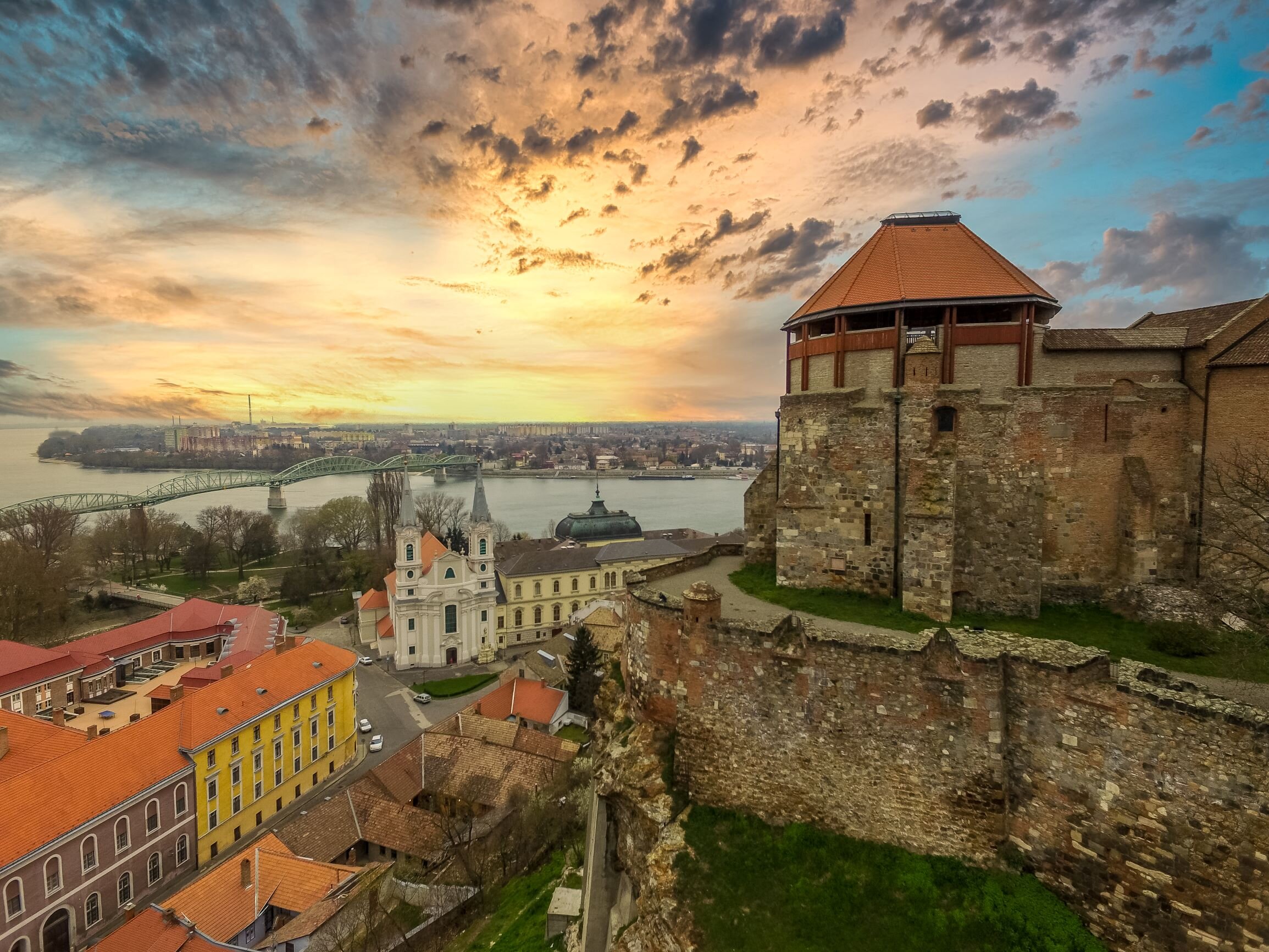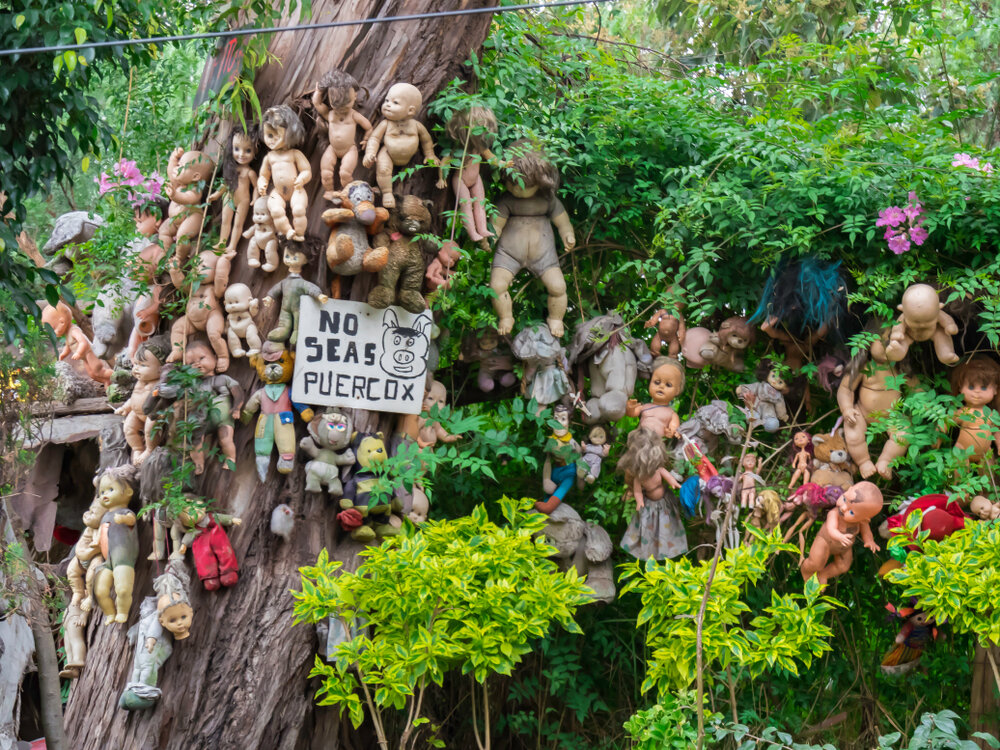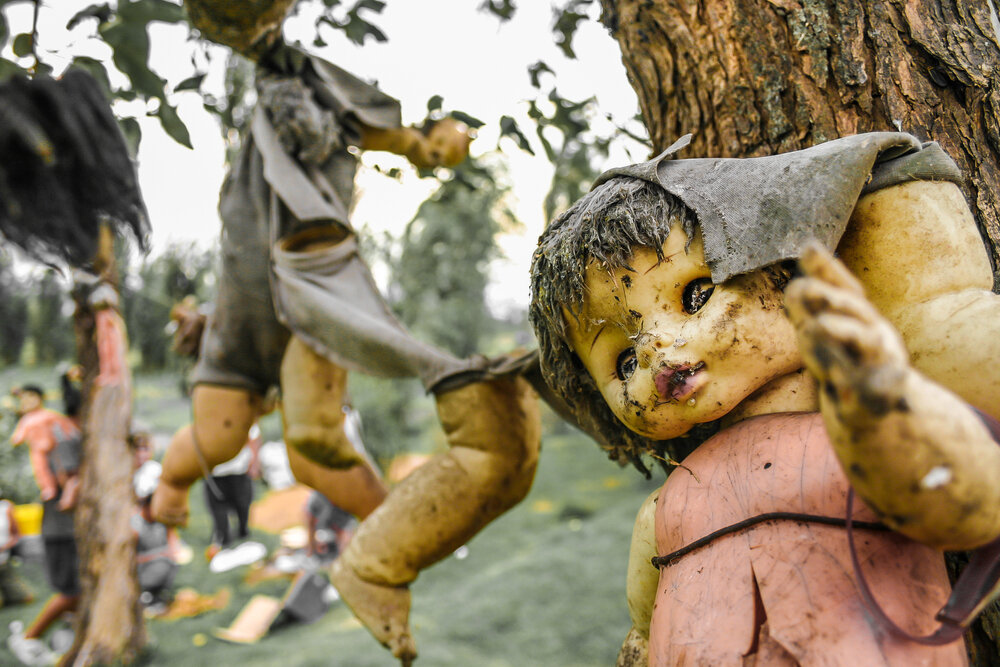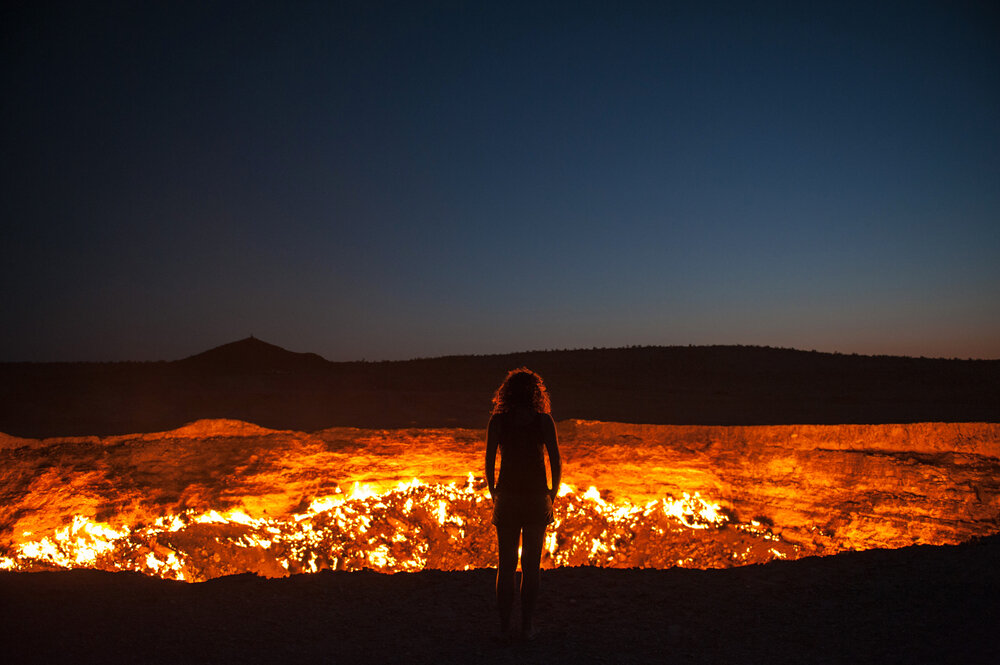Legends, History, and Culture: Exploring Eastern Europe's Castles
One of the most incredible aspects of visiting Eastern Europe is enjoying the unique history and architecture of the area. And nowhere is the past showcased more brilliantly than in the castles that dot the landscape. Want to get swept away? Let's discover some beautiful Eastern European castles:
One of the most incredible aspects of visiting Eastern Europe is enjoying the unique history and architecture of the area. And nowhere is the past showcased more brilliantly than in the castles that dot the landscape.
Ranging from castles so well-renovated that they house members of Estonian Parliament, to the romantic crumbling castles in Croatia, these buildings offer a unique glimpse into history. Want to get swept away? Let's discover some beautiful Eastern European castles:
Romania's Legendary Castles
This European country surprises travelers with its beauty and diversity. From the natural ecosystems of the Danube Delta to the vibrant arts and culture scene of Romania, there are surprises around every corner. Did you know that Romania, which is approximately the same size as Great Britain, is also the country which inspired Bram Stoker's Dracula?
Corvin Castle
Rearing up from the surrounding greenery like a fairy tale castle, this Romanian castle is also known as the Fortress of Hunedoara, and Castlelul Corvinilor în Romanian. The first stones were laid in the 14th century, but John Hunyadi began building the castle in earnest in the 1440s.
With its Renaissance-Gothic architecture, innovative mixture of circular and rectangular towers, and sturdy limestone-dolomite construction, it's a fanciful yet solid structure. It's also chock-full of fanciful legends: legends of mysterious fountains, fairies, and ravens. You can visit the castle to soak in all the legends, stories, and gorgeous architecture.
Bran Castle
This compact castle, built in 1211 by Teutonic Knights, is now associated with the Romanian prince, Vlad Dracula, said to inspire Bram Stoker's Dracula. Although the medieval architecture and plunging precipice near Bran Castle conjures romanticism, the historical figure Vlad Dracula never lived in Bran Castle (though he may have been briefly imprisoned there).
There are, however, myths in the nearby villages of steregoi, evil spirits who live normal lives by day then terrorize the other villagers by night. Though it's obviously not the home of Dracula, the dramatic blood-red rooftops of Bran Castle contribute to its mystique, and it's open for admission.
Croatia's Romantic Castles
From its gorgeous turquoise beaches to its majestic national parks, to its 1,244 islands, there is no deficit of adventure to be found in Croatia. This crescent-shaped country on the Adriatic Sea doesn't just have natural splendor galore: it also has a fascinating history, much of which can be explored through the architectural legacy of its castles.
Cetin Castle
Above the small village of Podcetin, you'll see Cetin Castle, known locally as Cetingrad. It's unknown when this mysterious castle was built, though there is conjecture that it dates all the way back to the Roman Empire. In the Middle Ages, it was a central location to a nearby Franciscan monastery and some local churches.
Though the surrounding greenery has begun to encroach upon Cetin Castle, covering the stones of this ancient building, its majesty is still clear and undeniable. Dinarić Fortress Like Cetin Castle, Dinaric Fortress has fallen into some disrepair over the ages. However, there's something indescribably beautiful about the backdrop of this fortress, which is the amazing Mount Dinara of the Dinaric Alps. Built in the 15th century, this fortress (also known as Glavas) was built as one of a chain of fortresses meant to protect Croatia from Turkish invasions.
Hungary's Dramatic Castles
From the wine country of the Tokaj Region to the gorgeous surface of the Balaton Lake to the incredible architecture stretching back thousands of years, Hungary is a fascinating country to explore. Like many Eastern European nations, its countryside is speckled with gorgeous castles, many of which are open for exploration from visitors.
Boldogkő Castle
Built on a cliff, this dramatic castle's name means "Happy stone castle". Built sometime after the Mongol invasion, this castle has a dramatic central turret and a mysterious past. In 2002, it underwent some major reconstruction, including a 100m walkway over the courtyard. Another walkway leads to a dramatic lookout platform, while both celebrate the majestic nearby views. You can visit Boldogkő Castle to take in some of the magnificent views and learn about the history of the castle through various exhibitions.
Esztergom Castle
From the 10th century until the middle of the 13th, Esztergom was the capital of Hungary. During this time, Esztergom Castle was a vital cultural center for Hungary. In the next centuries, this castle underwent some trying events. Between the years of 1526 and 1543, it was actually besieged a full six times by invaders like the Ottoman Empire or Ferdinand I. Most of the castle was destroyed during this time, and it wasn't until 1761 that it was reclaimed and restored. Now, you can tour the Castle Museum, marveling both in the beautiful brick-work design and learning about the history of Esztergom.
Estonia's Unique Castles
Did you know that the Estonian island of Saaremaa has a uniquely high density of wellness facilities and spas? That Estonia houses the tallest pine tree in the world? Estonia is full of history, architecture, and surprises. Let's take a look at some of its castles.
Hermann Castle
Also known as the Narva Castle, this Estonian castle has been variously occupied by the Danish, German, Swedish, Russian, and Estonian forces. It boasts a huge, 50m tower called Hermann Tower which gives it a fairy tale appearance. The castle was damaged in WWII but is now open for exploration by visitors.
In fact, every autumn there is a Museum festival in Narva. In the summertime, open-air events are held in the castle's northern yard. You can also visit the Castle's museum to learn more about the history of the structure and the city of Narva, as well .
Toompea Castle
Built on the crumbling ruins of a fortress, Toompea Castle as it's known today was built between 1767 and 1773 and boasts a gorgeous baroque facade (16) It was created from local limestone and incorporates Baroque design with Gothic architecture with more modern twists from the 1930s. This gives it an eclectic and unique mix of styles. Currently occupied by the Riigikogu, or Estonian parliament, Toompea Castle is to this day an important cultural location. Eastern
Europe's Incredible History and Architecture
There's nothing like travel for opening your eyes to the unique history of other countries. Exploring castles is an incredible way to catch a glimpse of history, culture, and architecture while allowing yourself to be swept away by beautiful views and romantic vistas.
Top Ten Scariest Places on Earth
There are many places in the world that for some unexplained reason just gives people the creeps. Whether you are a horror movie fan, believe in ghosts, or just want to challenge yourself, visiting a creepy place is a unique experience that you should try. Here's a glimpse of some possible spots for a visit that could boast being the scariest place on Earth.
There are many places in the world that for some unexplained reason just gives people the creeps. Whether you are a horror movie fan, believe in ghosts, or just want to challenge yourself, visiting a creepy place is a unique experience that you should try. Here's a glimpse of some possible spots for a visit that could boast being the scariest place on Earth.
Island of the Dolls, Mexico
If you have a doll phobia, you might want to avoid this place. Isla de las Muñecas (Island of the Dolls) is hidden deep in the canals of Mexico City and can only be reached by boat. Although it is quite a challenge to get here, many tourists flock to this island to see thousands of creepy dolls mostly hanging from trees and mutilated.
Legends claim that the occupant of the island found a girl who drowned in the area. Shortly after that, he found a doll. This prompted him to collect baby dolls, as well as Barbies, which he hung around the island. The number has astonishingly reached to more than a thousand.
Aokigahara Forest, Japan
Forests usually invoke a sense of peace among travelers. However, Japan's Aokigahara Forest is different. This unusual place sits at the foot of the picturesque Mount Fuji and is one of the most popular suicide destinations in the world.
Since the mid-20th century, many people have ended their lives in this forest, and the number keeps increasing every year. In 2002 alone, there were more than 70 suicides in the forest. The year after, over a hundred bodies were found at this site.
It is easy to get lost in the 4,000-hectare forest of Aokigahara. Now, police have put numerous signs in the area to dissuade suicides. Volunteers cleaning the area often find the corpses. However, there are still unrecovered bodies in the virgin forest.
According to authorities, there are only three kinds of people who visit the forest. First, are the tourists who want to appreciate nature. Second, curious people who are there for the thrill. The last type includes people who do not want to leave the forest.
Hill of Crosses, Lithuania
Although crosses might not necessarily seem creepy, the Hill of Crosses in Lithuania adorned with 100,000 crosses will definitely chill you to the bone. This eerie site was a popular destination for pilgrims. Here, you can find many designs and sizes of crosses. Most of them were placed here by pilgrims who wished for a miracle, which is a tradition which dates back to 1831.
Hanging Coffins, Philippines
Coffins are usually buried six feet under the ground. However, in Sagada, Philippines, the case is different. Here, the dead are not buried. Instead, they are hanged along the side of a towering cliff. This tradition can be traced back to over two thousand years. The Igorots made their own coffins, and when they died, they were lifted next to their ancestors in the coffins they made themselves.
According to belief, the higher the body is hoisted up, the more they are closer to the spirits of their ancestors. The Igorots are said to be fearful of being buried underground because they thought they might rot quickly. By hanging the coffins on a cliff, they believed that their bodies stayed safe.
Overtoun Bridge, Scotland
In the mid-1860s, a philanthropist and industrialist built a mansion named the Overtoun House. This castle has a bridge that towers 15 meters above a creek. Weirdly, this bridge has a bizarre effect on dogs. This bridge inexplicably is known to cause dogs to leap to the creek below, which usually leads to either injuries or death. In the 1990s, a story of a border collie was picked up by the media which made this bridge a famous tourist destination.
The Door to Hell, Turkmenistan
If there's an entrance to hell in this world, it may be in Turkmenistan. The Gates of Hell started to burn in 1971 when a drilling rig punched a hole to the ground which caused natural gas to escape. To put a stop to this environmental issue, the Soviets set it on fire, and it has not stopped burning since.
Capuchin Catacombs, Italy
Palermo in Italy boasts one of the most morbid places on earth. Although it may look like any other building from the outside, the Capuchin Monastery is home to over 8,000 impeccably-dressed corpses. The oldest corpse here passed away in 1599. Additionally, the catacombs are divided into corridors which host different people. There is a dedicated wing for professionals, religious pillars, and many other groups.
Alcatraz, California
Alcatraz has been many things: a fortress for the civil war, home for birds, and a prison. In 1946, prisoners attempted to escape from the area and started a hostage crisis. As a result, over 18 people were injured, and five people were killed including three prisoners and two officers. Since then, it has had a haunted reputation. According to people, Al Capone, who used to be an inmate, can be heard playing the banjo in the prison cell. Another mobster, Alvin Karpis, is said to haunt the kitchen and bakery.
Amityville House, New York
For fans of the films and the book, visiting the Amityville Horror house is a must. This home is shrouded by a scary tale. In 1974, Ronald DeFoe killed all six members of his family in this very house. Its neighbors have also reported paranormal activity in the vicinity.
Pripyat, Ukraine
Abandoned cities are famous for standing still in time, and Pripyat is no different. In fact, Communist propaganda can still be seen on its walls and clocks still point to 11:55, the very moment the power got cut off. The ghostly ton of Pripyat was abandoned more than three decades ago due to the Chernobyl nuclear disaster which killed 30 people. Pripyat was the closest town to the disaster, and over 49,000 people were forced to leave. It even has schools, a hospital, parks, and many more establishments.
Now, the area's wildlife is thriving despite its radiation levels. Fortunately, animals have not exhibited mutations. However, there are some plants which glow due to the high nuclear level in the area.
An Experience of a Lifetime
If you want to deviate from the usual vacations involving pristine beaches and world-class resorts, spooky places might be a great choice for you. Experience paranormal activity, take a stroll in suicide destinations, and immerse yourself in past prisons; the possibilities are endless.
Have you been to any of these places? Do you have other ideas to ad to our list? Share your experiences and ideas in the comments below.























